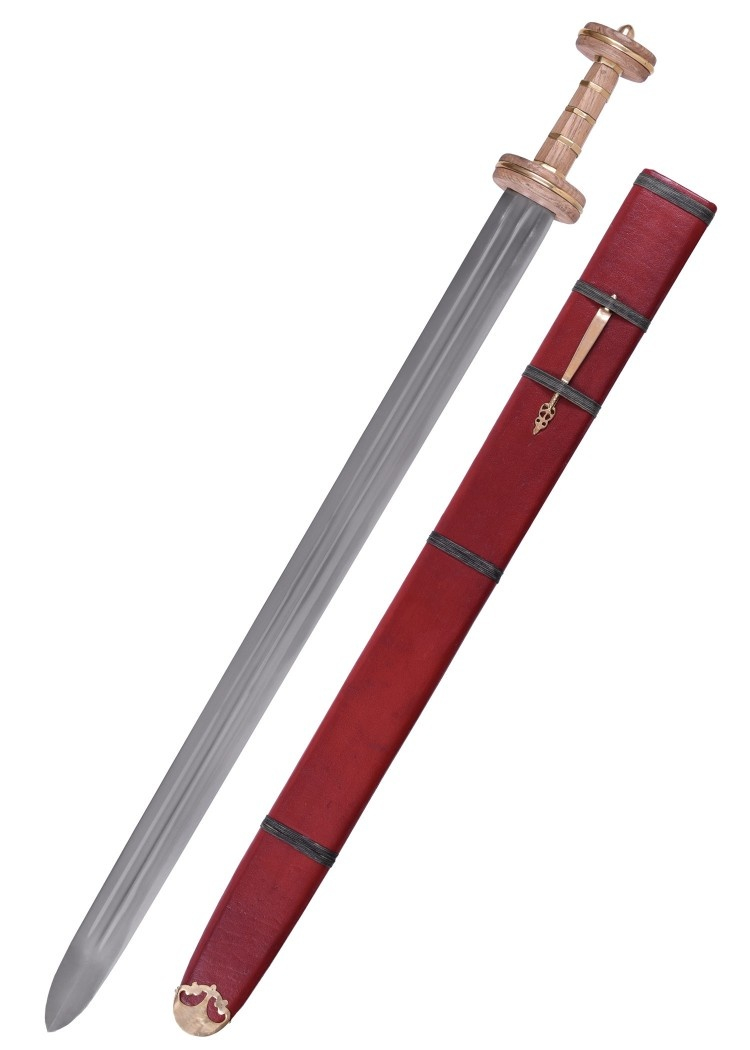Spatha

One of the most famous Ancient Roman weapons is the spatha. The spatha was a type of straight and long sword with a handle length of between 18 and 20 cm (7.1 and 7.9 in) that was used throughout the realm of the Roman Empire from the first to sixth centuries AD. Later swords, from the 7th through 10th century, are unmistakable derivatives and are frequently grouped together under the title spatha.
The Roman spatha was employed in battle and gladiatorial combat. The spatha of literature first appears in the Roman Empire in the first century AD as a weapon used by likely Celtic auxiliaries and subsequently evolved into a standard heavy infantry weapon, relegating the gladius to light infantry use. The spatha appears to have taken the position of the gladius in the front ranks, providing the troops more reach when thrusting. While infantry versions had a long point, cavalry versions had a rounded tip to prevent unintentional stabbing of the cavalryman's own foot or horse.
Celtic mercenaries introduced the spatha to the Roman army during the Second Punic War. The spatha was a weapon used by cavalrymen, whereas the gladius was used by auxiliaries and legionaries. In the second century, the Roman infantry would acquire the spatha. It was a very adaptable sword, evolving from its roots in Gaul to its use in the Roman military. The blade measured 60 to 75 cm (24 to 30 inches) in length.











